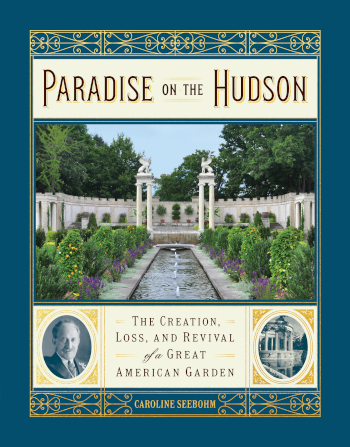If you are like me, you might wonder what kind of garden you would create if you had unlimited funds? I've wondered that about those fantastic gardens created by wealthy people - did they really have a personal interest in gardening or was it just for show? I suspect the latter but one exception would be Samuel Untermyer, the subject of Paradise On The Hudson - The Creation, Loss & Revival of a Great American Garden by Caroline Seebohm.
I wasn't familiar with Untermyer or the garden but this book has been on my reading list for over a year now. I finally read it and it is an engrossing account of the man, the garden and its legacy.
Although mostly forgotten today, Samuel Untermyer was famous in his day (1920s and 1930s) as a prominent lawyer, supporter of women's rights and critic of Adolf Hitler and the Nazi regime and tried to warn the public of his rise in power.
A self-made millionaire, Untermyer graduated from the Columbia Law School at the age of 20 and soon established the only Jewish law firm on Wall Street. At the age of 41 and at the height of his success, he purchased Greystone, a 99-room mansion on 113 acres in Yonkers on the Hudson River. He then acquired adjacent land to expand the property to 150 acres and hired landscape designer William Welles Bosworth and requested that he "make the finest garden in the world". Untermyer had one ulterior motive - he possessed a very competitive nature and wanted to outdo distant neighbor John D. Rockefeller's garden "Kykuit", which was also designed by Bosworth.
Untermyer's request was no mere flight of fantasy coming from your typical megalomaniac. He was genuinely interested in gardens and had a great knowledge of plants. He once stated "I'm told that my profession is the law. But my real affection is for my greenhouse." He was especially fond of orchids and grew hundreds in his greenhouse. He always wore an orchid in the buttonhole of his jacket. One of the chief attractions at Greystone were 13 greenhouses that had been built by the previous owner, the former governor of New York State, Samuel J. Tilden.
Bosworth would get frustrated many times when designing the garden because Untermyer would refuse to tear down a greenhouse or cut down a tree to accommodate Bosworth's vision. However, the end result was to be one of the most celebrated gardens in the world. A combination of classical influences included a magnificent Persian-inspired Walled Garden, complete with various waterways and pebble mosaics. There was also "The Vista", a dramatic descending staircase to led down to the Hudson River, inspired by Italian gardens in the Lake Como region. The "Temple of Love" is a Greek-inspired dome that sits atop a steep rockery. In addition to the stunning collections of statuary and structural elements, there were dazzling displays of rhododendrons, shrubs and perennials.
 |
| The North Canal of the Walled Garden with the sphynxes in the background (c.1900) |
 |
| The view today |
Untermyer's garden quickly became a famous attraction and he opened it to the public. Glittering parties and functions often took place there and Isadora Duncan danced on the grassy lawn next to the pool. The year before his death in 1940, there was an astounding 30,000 visitors to the garden on a single day.
Unfortunately, Untermyer's death brought an untimely closure to the gardens and it would be reduced to squalor for almost 70 years. Untermyer had attempted to donate his property to the state or city but he refused to donate the million dollar request to assist the upkeep. This was odd since a million dollars for him should not have been such a hardship. His three children were not interested in it either so the property sat there with the house eventually being torn down and pieces of the property sold off.
An attempt to rescue the gardens in the 1970s failed and it was not until 2011 before a non-profit organization, Untermyer Gardens Conservancy, spearheaded by architect Stephen Byrns began the restoration that continues to this day. Head gardener Timothy Tilghman (whose videos on YouTube I recommend) and a number of full-time gardeners are making amazing progress.
Text and photos by Phillip Oliver, Dirt Therapy






I'd never heard of the person, the garden, or the book—but now I am intrigued!
ReplyDeleteI was not familiar with it either.
DeleteGreat review Phillip! Marilyn and I visited Untemeyer a few years ago and were very impressed with the current horticultural staff and the restoration and work maintenance they are doing. What a treasure and rich history. A good read - thank you for the review.
ReplyDeleteI would love to see it.
Delete